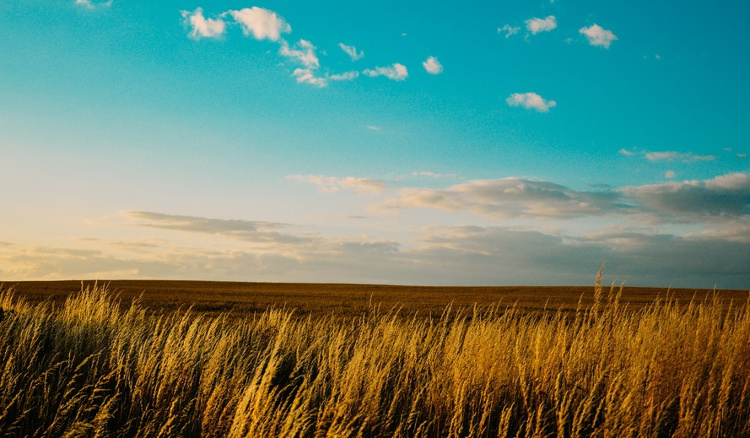
Technology is continuing to make our life better and often in unprecedented ways. This time, it is about finding a solution to the drought-ridden agriculture. Yes, you have guessed it right. Advanced technologies have arrived to offer an effective solution to various irrigation problems. What kind of technology it is and how it is going to contribute to irrigation, we are discussing all this in detail right here.
The interconnected objects referred as Internet of Things (IoT) is continuing to evolve offering more control over our living environment and allowing more ease in doing things. Many consider this as the next big horizon in the evolution of the Internet. Thanks to the robust capability of collecting, storing, analysing and distributing data among diverse interfaces, apps and devices, the freedom for real-time application of data and data-driven insights has become easier than ever before.
But how this pool of data-driven insights can help irrigation? Well, it is more about obtaining the real-time information about various aspects pertaining to irrigation. For instance, there are sensors to remotely offer bore meter reading, deliver real-time data about water level in a river or even the moisture level in a farm land. All these data input from high-tech sensors can help us managing irrigation and irrigation resources better.
In drought-ridden places, such maneuvers can really bring green revolution by fulfilling the demands of irrigation through resource management. We cannot forget to mention that aerial drones surveying the farmlands can also furnish us with valuable insights in this respect.
Smart water meters and sensors
How water usage in homes, agricultural lands or in business places is measured? Well, it is measured through analog meters in the majority of cases. These meters are incapable of offering real-time water usage data to the authorities because they remain unconnected. On the other hand, the real-time report about the usage of water usage can not only control but can also keep track of the usage. Smart connected meters with this capability to notify about the water level and usage can help prevent misuse and under utilisation of water resources.
The smart sensors in the farmland are additionally capable of notifying in a real time about the moisture level in lands and can prevent spoiling of water. This capability can be further aggravated if the real-time sensor data can trigger action in the meter by switching it off or on. The meter can be automatically switched on or off depending on the need of irrigation and level of the water resource.
Moreover, smart sensors can detect the faults in the irrigation system in a real time and can prevent draining of water in the absence of proper supervision. For leaks in pipelines, such smart sensors are doubly effective as they are often hidden from view and make detection of leaks really troublesome. The prompt detection of leaks and faults in will enable users addressing the issue quickly and will help saving water.
Smarter irrigation systems
Farming needs sustained irrigation that itself consumes the highest percentage of water resource in any area. For instance, in California alone, irrigation of various ornamental plants and crops consumes over 80 percent of water usage. As experts always perceived, a high percentage of this irrigation water is actually wasted due to lack of supervision and real-time monitoring. In many places like California drought is a recurring problem due to lack of control in the irrigation water.
To solve this problem smart irrigation systems powered by latest IoT technology can help conservation of water resources better by monitoring irrigation through remote sensing technologies. Smart connected sensors work with smart sprinklers leveraging is a great example of the application of IoT in agriculture. To equip the smart irrigation further smart sensors can be embedded in the farmland soil that can easily measure the level of moisture. The moisture measuring sensors of the farmland can further relay the information about moisture level to the smart sprinkler and it can start sprinkling the right amount of water upon the soil.
Latest IoT devices helping irrigation and agriculture going smart
The recent development in remote sensor-enabled smart irrigation systems gave birth to several IoT devices and help make irrigation and agriculture smarter and better. Here are two of the latest IoT devices developed and successfully deployed to make agriculture smarter a reality.
CropX
CropX is the latest IoT-enabled smart irrigation device that is built combining the soil sensor and cloud-based data analytics. CropX is affordable and offers exceptional ease in day-to-day usage by farmers with least technical know-how. The device will not only help improving yields of crops but will also contribute to reducing the cost of water resources.
Adequate water supply is crucial for proper yields while conserving water resource is important to prevent a shortage. CropX can address both of these aspects of agriculture. The device remains connected with a website that remotely offers data about the moisture level of farmland and the user in the real-time can schedule irrigation through this web interface.
eBee Ag
The use of drone or UAV has been very popular to monitor the farmland remotely. Through the drone captured images of the acres of farmland, the farmers can obtain accurate view and data about their yields, soil condition and water level. eBee Ag is an advanced drone developed specifically for the agricultural purpose. The drone can provide accurate images of every meter of a large land even on a clouded day. Moreover, the images provided by this drone are resolution-wise better than those provided by the satellites.
The images corresponding to various agricultural aspects like the plant growth, yield of crops, harvesting and fertilization needs can further be processed into a graphic output offering crystal clear spatial information about every meter area of the farm field. This would obviously help cutting agriculture cost, managing harvesting and yield and making irrigation better.










































































[…] take corrective action. Scientists have also successfully implemented IoT systems to control agricultural irrigation, which greatly helps conserve […]